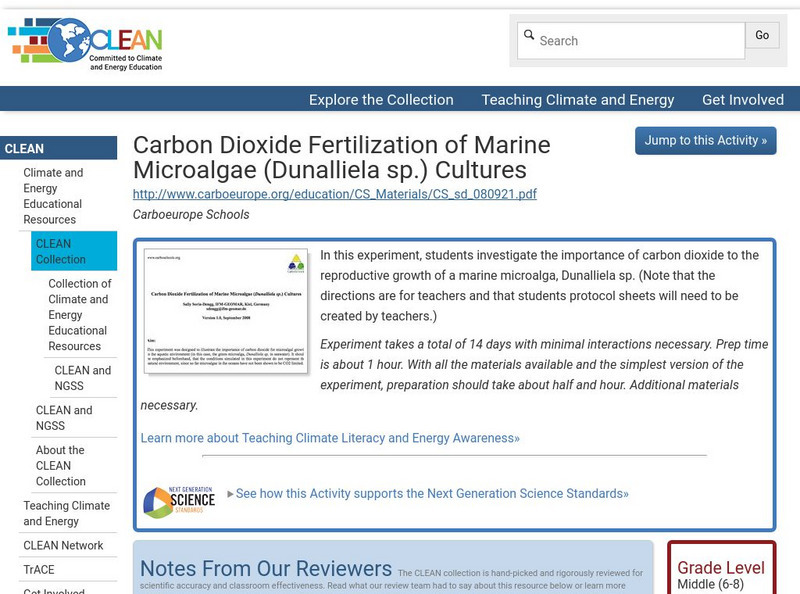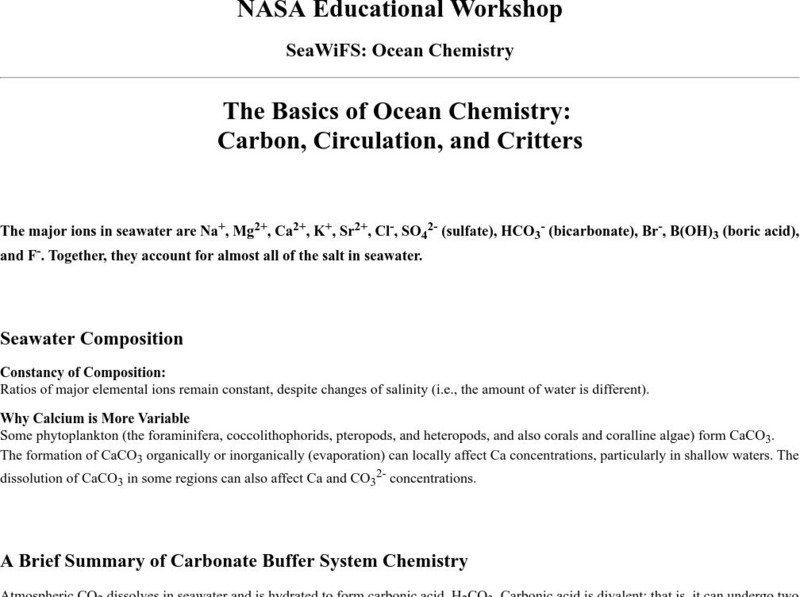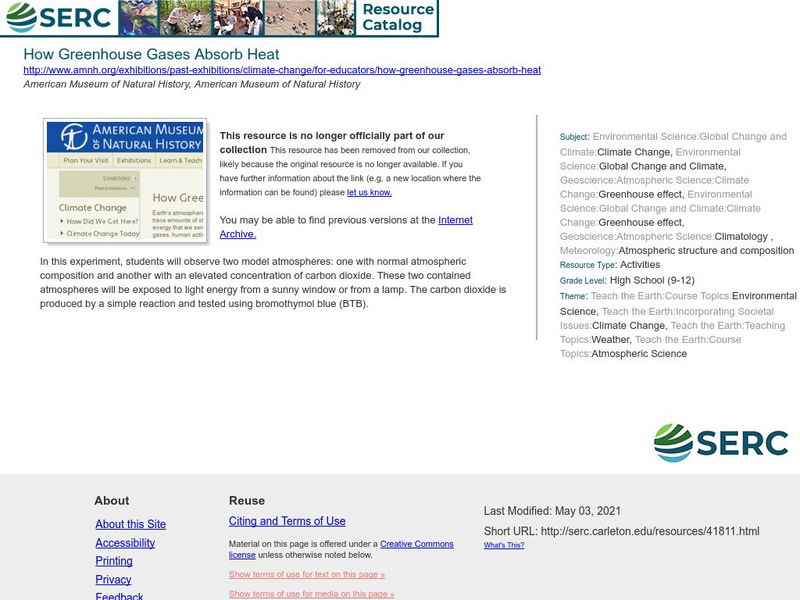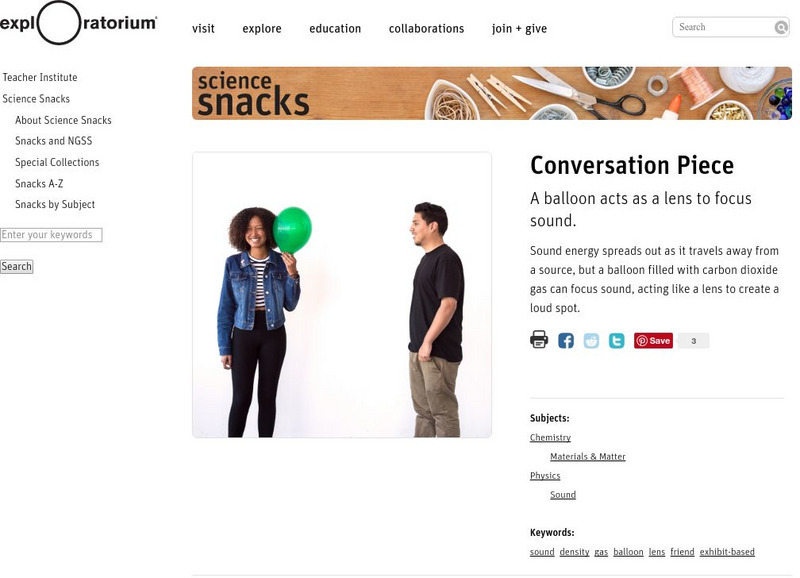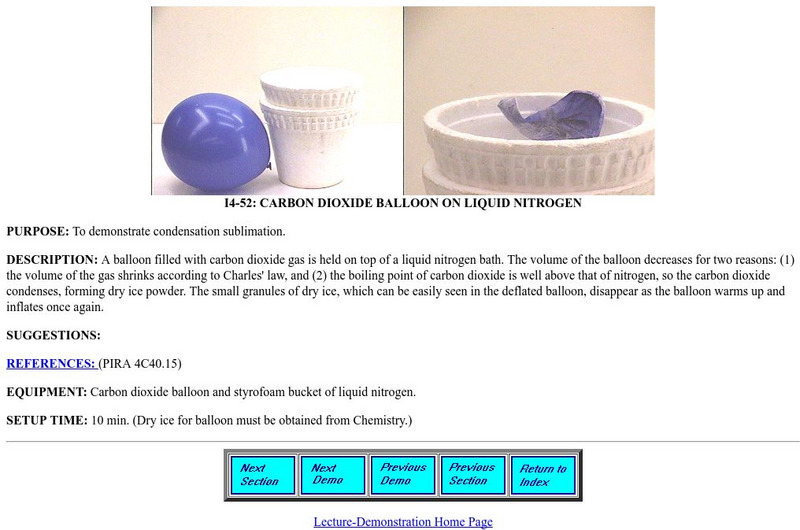Hi, what do you want to do?
Curated OER
What Do Concentrations Mean?
Students investigate the concept of climate gases and practice using the appropriate measurement terms. The lesson includes information that is used by the teacher to conduct class discussion or as a source of background for students.
Curated OER
Newton's Third Law of Motion
Seventh graders are introduced to Newton's Third Law of Motion. In this physics lesson students examine the concept of thrust as one of the forces acting on aircraft.
Curated OER
Plant Party
Students identify plant parts. In this plants lesson, students bring in a vegetable. Each student classifies which part of the plant their vegetable comes from (flower, root, ect.) Students identify the parts of their vegetable and later...
Curated OER
What Effects Do Trees Have On The Environment?
Learners examine the interrelationship between trees, soil and people focusing on urban areas. They collect and analyze data about trees in their research area.
Curated OER
On Thinning Ice: An eco-theatre production about climate change
Students investigate the causes and possible consequences of climate change in the north, and realize their choices and actions can help reduce climate change. Some of the skills involved in the lesson are discussion, synthesis,...
Curated OER
Give Me Some Air!
Third graders examine how trees produce oxygen. They examine satellite images of the reservation they examining and interpret the number of trees on the land. They determine how natural resources should be used wisely.
Curated OER
Biofuels Blast!
Students observe yeast fermentation using different energy source. In this chemistry lesson, students measure the gas collected in the balloon. They upload their observations on the internet so they can share it with kids across US.
University Corporation for Atmospheric Research
Ucar: Project Learn: Where in the World Is Carbon Dioxide?
In this lesson on greenhouse gas, students conduct experiments to detect and collect carbon dioxide, then use titration to determine how much carbon dioxide is present in an indicator solution.
Climate Literacy
Clean: Effects of Increased Co2 in the Air on Seawater and Distilled Water
Students perform an experiment comparing the impacts of CO2 on salt water and on fresh water. In a short demonstration, students examine how distilled water and seawater are affected differently by increasing carbon dioxide in the air.
PBS
Pbs Kids: Dragonfly Tv Do It: Carbon Dioxide
PBS site offers an experiment kids can do at home to see how carbon dioxide can put out burning candles.
Climate Literacy
Clean: Carbon Dioxide Fertilization of Marine Microalgae Cultures
In this experiment, students investigate the importance of carbon dioxide to the reproductive growth of a marine microalga, Dunalliela sp.
Bio Topics
Bio Topics: Experiments to Compare Carbon Dioxide Content of Inhaled and Exhaled Air
A science experiment comparing carbon dioxide content of inhaled and exhaled air.
NASA
Nasa: The Basics of Ocean Chemistry: Carbon, Circulation, and Critters
An explanation of ocean chemistry, supported by illustrations, for example, of the global carbon cycle in the 1980s and the annual carbon dioxide flux. The concentration of nutrients in the ocean is discussed for its impact on marine...
Science Education Resource Center at Carleton College
Serc: How Greenhouse Gases Absorb Heat
In this experiment students observe two model atmospheres: one with normal atmospheric composition and another with an elevated concentration of CO2. These two contained atmospheres will be exposed to light energy in a sunny window or...
Read Works
Read Works: Miss Johnson's Plant Experiment
[Free Registration/Login Required] A literary text about a teacher who does an experiment to teach her students that plants need sunlight. A question sheet is available to help students build skills in reading comprehension.
Exploratorium
Exploratorium: Science Snacks: Conversation Piece
Did you know a balloon filled with carbon dioxide can act as an amplifier? In this activity test how sound travels through carbon dioxide molecules.
University of Missouri
Microbes in Action: Classroom Activities: A Swell Lab: Yeast Fermentation [Pdf]
This two-day experiment uses different concentrations of sugar to study the rate of fermentation. Students observe the rate of carbon dioxide gas produced by yeast to infer the rate of fermentation. Lesson plan gives a lab procedure,...
PBS
Pbs: American Experience: Earth Days: Timeline:the Modern Environmental Movement
Trace the advance of the environmental movement from 1948 through the 1980s. Read about the legislation promoting a healthy environment passed under both Democratic and Republican presidents.
Science Fun for Everyone
Science Fun: Explode a Bag
Science activity shows what happens when a bag can't hold any more carbon dioxide.
University of Maryland
Um: Carbon Dioxide Balloon on Liquid Nitrogen
A page from the University of Maryland Physics Lecture Demonstration Facility. Provides directions for a teacher demonstration of sublimation. Shows apparatus and set-up; provides suggestions. Easily adaptable as a student project or lab...
Science Education Resource Center at Carleton College
Serc: Investigating Discovering What Plants Need for Photosynthesis
This activity will be used prior to any direct instruction for photosynthesis. In this inquiry lab, learners design and conduct simple experiments using elodea and Bromthymol blue to determine whether plants consume or release carbon...
Museum of Science
Museum of Science and Industry: Online Science: Create Gas
Follow these simple, step-by-step instructions to create and observe the results of the chemical reaction between vinegar and baking soda.
Science Bob Pflugfelder
Science Bob: The Exploding Lunch Bag
This site contains a simple procedure for observing an acid-base neutralization reaction (baking soda and vinegar), in which the product, carbon dioxide, causes a zipped bag to explode.
Michigan Reach Out
Michigan Reach Out: Do Plants Need Sunlight?
Do plants need sunlight? What happens to plants if they do not get sunlight? Students will act like scientists in order to answer these questions. A scientist takes questions like this and then conducts an experiment to see what really...















